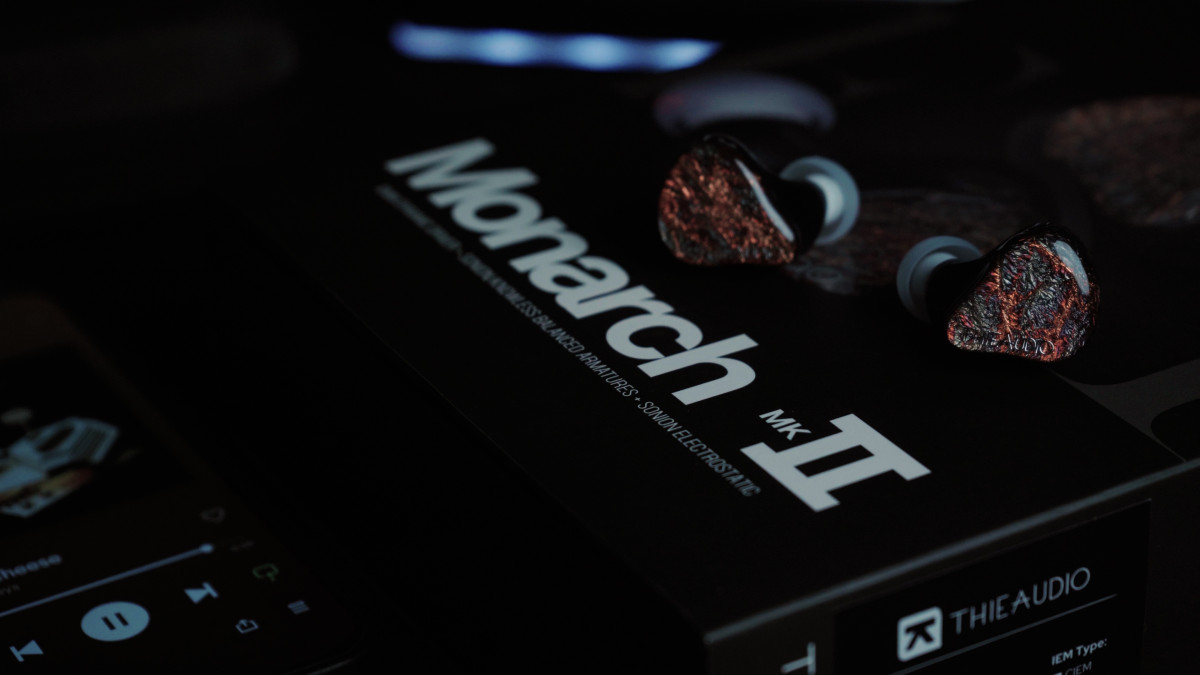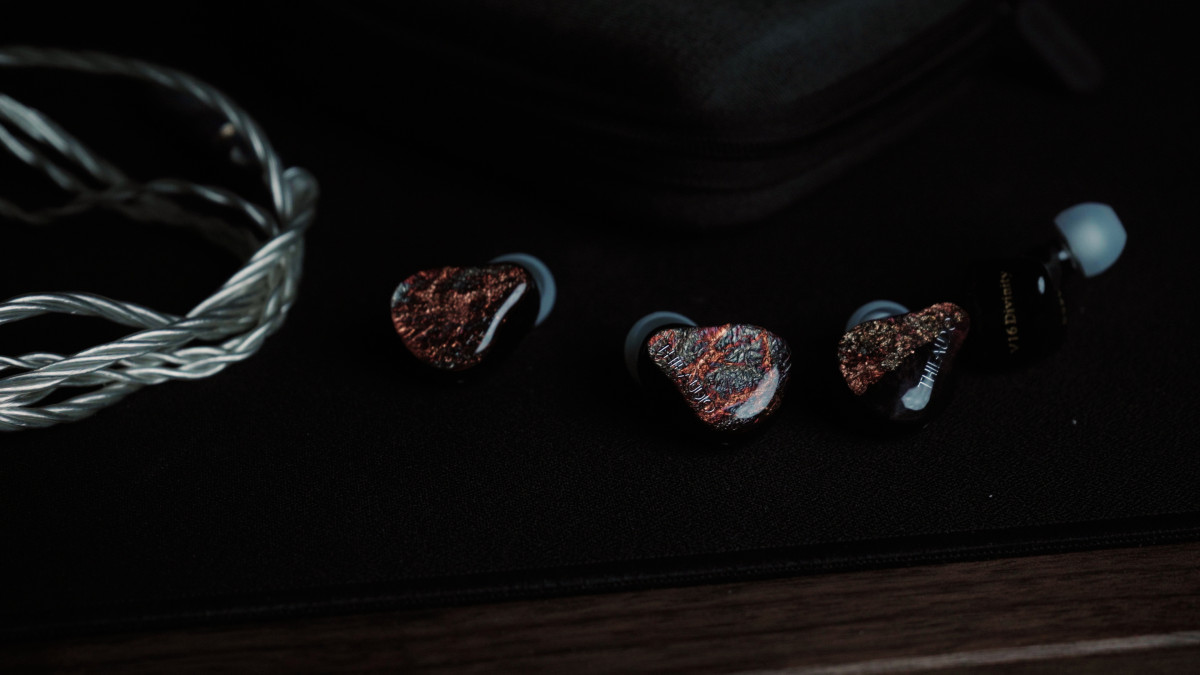ThieAudio Monarch MKII Review - Chrono's take

Introduction
It’s been quite a while since I last had the opportunity to spend some time listening to IEMs, with the last set I reviewed being the Beyerdynamic + Astell&Kern T9iE . This past week, however, I’ve been listening to what is without a doubt one of the hottest pairs of IEMs currently available in the market, and that is the ThieAudio Monarch MKII .
Monarch MKII - Product Summary
- Reasons to buy
- Amazing packaging and accessories
- Very detailed sound
- Cable comes terminated with 3.5mm by default
- Superb midrange
- Reasons not to buy
- Fairly large IEM
- Heavy cables can impact usability
- Not the last word in dynamic driver bass
 |
Get the Monarch MKII at headphones.com for the best available price. |
As the name would suggest, the Monarch MKII is the follow up to the also-immensely-popular Monarch tribrid IEM, however it comes in at the noticeably higher price point of $999 as opposed to the original’s $730 price tag. In this review, then, I’ll be sharing my experience with the Monarch MKII, whilst also drawing comparisons to the original Monarch and ThieAudio’s $1,500 Flagship, the V16 Divinity.
Sources and Music Used in Listening Tests
All the listening for this review was done on the Astell & Kern SR25 , and the Astell & Kern Kann Alpha . For the listening tests I used music from a wide variety of genres including Rock, Jazz, Classical, Acoustic, Hip-Hop, and latin. I played tracks from my own FLAC library, as well as from Qobuz and Tidal via Roon when using the Kann Alpha in DAC mode.
Accessories
Packed alongside the Monarch MKII are quite a few goodies. For starters there are the included tips, with three sets of silicone tips and three sets of foam tips ranging from small to large sizes. Also included is a travel case that, although not particularly pocketable, is still compact and easy to travel with. As for the included cable, you still get ThieAudio’s OCC Silver-plated cable, however unlike the original Monarch’s cable which was coated in rubber, this one uses a paracord braid and is more flexible and easier to work with. Lastly there are the new “Smart Switch” adapters which allow you to swap between 3.5mm single-ended, and both 2.5mm and 4.4mm balanced terminations for the cable.
Comfort
The Monarch MKII is a beautiful-looking IEM that also feels premium and well-built, however I have to note that it’s definitely on the larger side for IEMs. In this regard it’s similar to the original Monarch, which had a rather large chassis and one that I personally found difficult to wear for extended periods of time due to the size alone. This may be because I have fairly small ears, but it’s something to keep in mind as I personally don’t find the chassis here to be as well-contoured as on something like the Dunu SA6, so overall I wouldn’t say that the Monarch MKII is one of the more comfortable IEMs I’ve tried. As far as the ear tips go, though, I found both the silicone and foam sets to fit very comfortably; and once I actually determined which size was best for me, getting a solid seal was no problem at all.

Sound
As I mentioned earlier, the original Monarch was a tribrid IEM, and the MKII follows suit as it is powered by a 10mm Sonion Dynamic Driver, six Knowles Balanced Armature Drivers, and 2 Sonion Electrostatic Drivers
First Impressions
Right off the bat I’ll say that the Monarch MKII sounded generally more balanced than the original Monarch. In the original Monarch you had a somewhat over-emphasized subbass region that although not intrusive upon other frequency ranges, did make the IEM feel quite bass heavy. Additionally, there was a prominent peak at 8K that could make the mid treble feel over-brightened, and did introduce some sibilance.
For the most part, I’d say that the Monarch MKII has resolved both of those issues that I had with the original model. However, the MKII–as much as I’ve enjoyed it–is not without its flaws, and as I’ll talk about briefly, it has some quirks of its own.
Bass
So I mentioned that the bass had been reworked and slightly toned down compared to the original Monarch, but that doesn’t mean that in any way is the MKII lacking in bass presence. For the most part the difference lies in the subbass region, which seems to have less of a swell to it and as a result feels less boomy. Aside from that change, really, the overall shape and size of the Monarch’s bass response seems unchanged; and despite the bass shelf under 120hz being perhaps a bit more generous than I’d personally like in the level of bass that it provides, the tuning here is a very enjoyable one–low tones are clean, yet powerful.
For a quick comparison to the Divinity, I actually prefer the bass tuning on the Monarch MKII as the Divinity's bass shelf seems to stretch a bit beyond 120hz and gives more of a mid-bass boost. This does sort of enhance the Divinity’s sense of low-end impact, but I do feel as though it also makes for slightly less defined bass tones.

Mids
The midrange is the section of the frequency response where I think that ThieAudio definitely got it right on both the original Monarch and the MKII. I don’t think it was quite as noticeable on the original Monarch due to the emphasis on both the bass and the treble, but the tuning here on the MKII for the midrange is really even throughout and has an organic voicing. Instrument and vocal tones have got a rich body to them, and their embellishing overtones are well-contoured in the upper midrange. Now, I will note that 3KHz was perhaps a tiny bit forward, but not enough to where I’d say that the Monarch MKII is an outright shouty-sounding IEM. All-in-all there’s really no complaints from me in the midrange; I think that it sounds great and it’s one of the greatest qualities of the Monarch MKII.
Highs
The treble region is where I feel mixed about the MKII. It doesn’t have as strong of an 8KHz peak as the original Monarch, but to me the highs on the MKII feel more uneven. So, as opposed to one large peak like you had on the original, I felt as though there were different spots in the treble that were unnaturally boosted. The most prominent and most noticeable one for me was a slight bump at around 5.5-6KHz, which introduced some low treble sibilance, a bit of glare, and also gave the Monarch MKII a very slightly nasally or metallic timbral quality. Then there was also a slight bump again at 8KHz, which although nowhere near as present as the one on the original Monarch, did still contribute to the MKII feeling a little sibilant in the mid treble region. One aspect of the highs that did improve from the original model to this new one, I think, is that the MKII seems to have better-extended treble. It doesn’t feel as airy as the V16 divinity, but it definitely does feel more present in that upper-treble region above 10K than the original Monarch.
Resolution
For detail retrieval I feel as though the Monarch MKII delivers very good performance, but for its $999 asking price I am a bit disappointed. Compared to one of my favorite IEMs, the Dunu SA6, there is indeed an upgrade there when it comes to overall image clarity but it’s not an almost $500 difference, and in fact, I personally didn’t hear much of an upgrade when going from the MKI to MKII. So, whilst the Monarch MKII does create a clean and nuanced image of the music, I don’t feel as though it's hitting the mark for its price bracket.
Soundstage, Imaging, and Layering
Given that it’s an IEM, the Monarch MKII’s soundstage presentation is forward and intimate. Nonetheless I actually found it to be quite enjoyable as it has some of the best instrument separation and layering I’ve heard on an IEM yet. Assisted by its fairly accurate imaging, all instrument and vocal lines are well distinguished and they do a great deal in enhancing the MKII’s sense of overall clarity.
Dynamics
For dynamics, I think that the Monarch MKII delivers very good performance for an IEM. I suppose that it’s not really that surprising since it does feature a dynamic driver, but I think it’s still very nice to mention that low tones do get a nice sense of punch and slam on the Monarch whilst also delivering a satisfying snap and attack in the upper registers–it just makes for an engaging listen.

Conclusion
I must say that the Monarch MKII is a very well-rounded IEM that I do think improves upon the original model at least in its tonality. The MKII possesses one of the best tunings I’ve heard on an IEM, and I like this tonality even more than that of the V16 Divinity. Still, as much as I like the Monarch MKII, I struggle to recommend it at its current $999 price point. Its technical performance is excellent, yet it doesn’t feel like for the $500 you pay over something like the SA6, or even the $300 over the MKI, you’re getting that great a value out of the additional money spent.
So, I feel as though at least in terms of pricing the Monarch MKII is in a bit of an awkward spot. Sure, it’s a great IEM, but I know that I personally wouldn’t stretch to get the Monarch over an SA6, and I definitely would not recommend MKI owners to upgrade to the MKII because, well, tuning aside there’s not really a significant upgrade there. I hope that in the future the Monarch MKII comes down in price, ideally closer to the price point of the original as opposed to its current one, but for now I’d suggest passing on this one.
Watch the video review here:
---
Buy the ThieAudio Monarch MKII at Headphones.com for the best available price.
Discuss the ThieAudio Monarch MKII on the HEADPHONE Community Forum here.
Looking to learn more? Check out Precogvision's review of the ThieAudio Monarch MKII.
---

